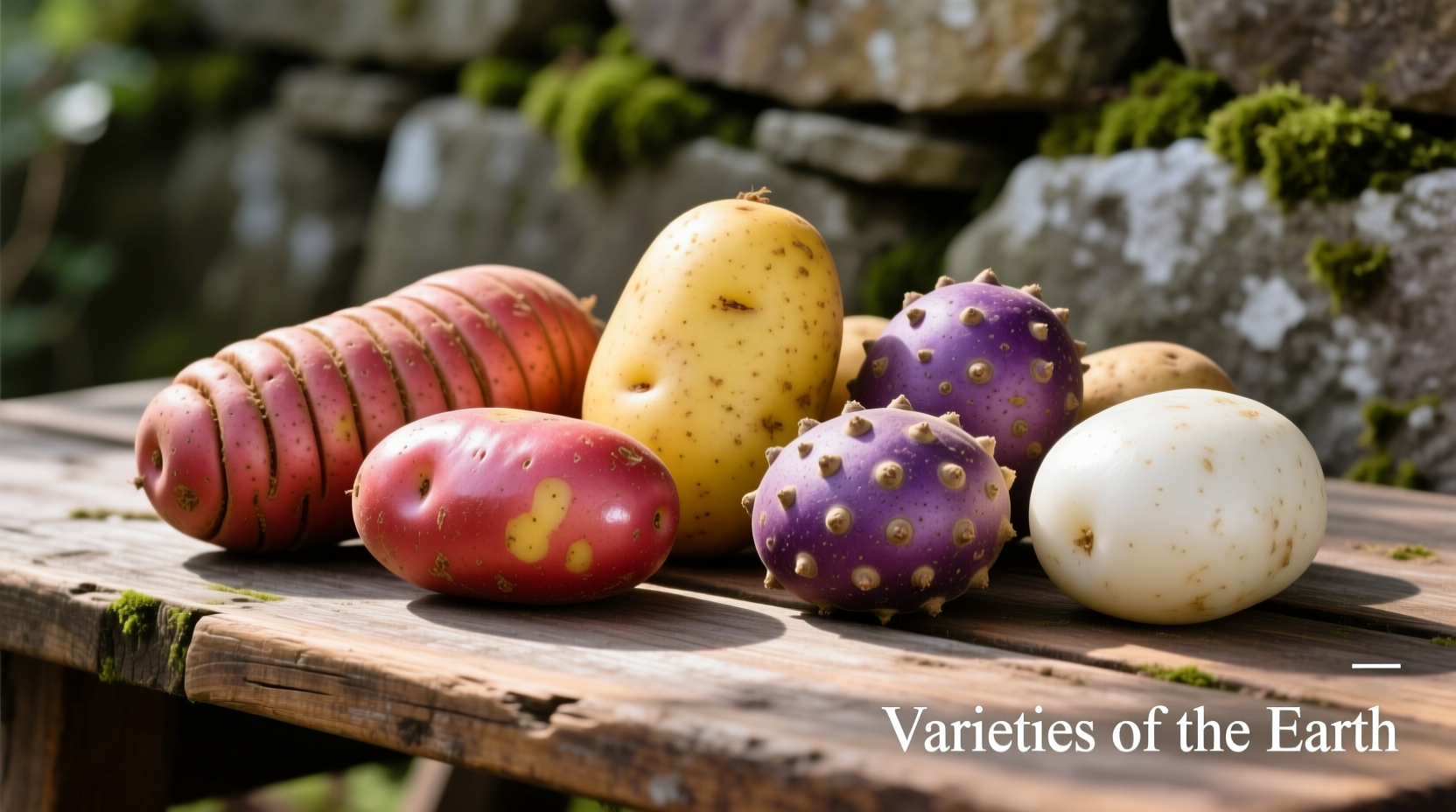Confused about whether potatoes qualify as vegetables? You're not alone. This seemingly simple question has created confusion for home cooks, nutritionists, and students alike. Understanding the potato's classification isn't just academic—it directly impacts meal planning, dietary guidelines, and even how you prepare this versatile staple. Let's clear up the confusion once and for all with evidence-based information you can trust.
Why Potato Classification Matters in Your Kitchen
When the USDA places potatoes in the vegetable group of MyPlate dietary guidelines, but botanists call them tubers, the disconnect creates real-world confusion. This classification affects:
- How nutritionists count your daily vegetable servings
- Meal planning for specific diets (like diabetic or weight management plans)
- Culinary techniques—why potatoes behave differently than carrots or broccoli when cooked
- Understanding food pairings based on botanical relationships
The confusion stems from two different classification systems serving different purposes. Let's examine both perspectives to understand why both "vegetable" and "tuber" labels apply in different contexts.
Botanical Reality: Potatoes Are Modified Stems, Not Roots
From a strict botanical perspective, potatoes (Solanum tuberosum) are classified as tubers—swollen underground stems that store nutrients for the plant. This distinguishes them from true root vegetables like carrots, beets, and radishes.
Here's what makes potatoes botanically unique:
- Eyes are growth points—those "eyes" on potatoes are actually stem nodes where new shoots emerge
- Starch storage—they store energy as starch in modified stem tissue, not root tissue
- Connection to plant—they grow on underground stems called stolons, not directly from roots
According to the Royal Horticultural Society, "Potatoes are stem tubers, which are different from root tubers like sweet potatoes or cassava. The potato tuber is a thickened portion of an underground stem that stores food for the plant." (RHS.org.uk)
Culinary Classification: Why Potatoes Are Vegetables on Your Plate
In cooking and nutrition, classification follows usage rather than strict botany. The USDA's Food Patterns clearly categorize potatoes as vegetables:
| Food Group | Includes | Excludes |
|---|---|---|
| Starchy Vegetables | Potatoes, corn, green peas, plantains | Beans, lentils, tofu (count as protein) |
| Red/Orange Vegetables | Carrots, sweet potatoes, pumpkins | White potatoes (in starchy group) |
| Legumes | Beans, lentils, peas (when dry) | Green peas, green beans (count as vegetables) |
The USDA's Dietary Guidelines for Americans specifically state: "Starchy vegetables include potatoes, corn, green peas, and plantains." This practical classification helps people understand how to incorporate these foods into balanced meals.

Nutritional Reality: How Potatoes Compare to Other Vegetables
While potatoes share the vegetable category with broccoli and carrots, their nutritional profile differs significantly. According to USDA FoodData Central, a medium potato (150g) provides:
- Carbohydrates: 26g (similar to corn, higher than most non-starchy vegetables)
- Fiber: 2.1g (less than beans but comparable to many vegetables)
- Vitamin C: 27mg (more than tomatoes, less than bell peppers)
- Potassium: 620mg (more than bananas per serving)
- Vitamin B6: 0.4mg (significant contributor to daily needs)
This nutritional profile explains why potatoes occupy a unique space—they provide vegetable-like nutrients but with higher carbohydrate content than non-starchy vegetables. Registered dietitians often recommend treating potatoes more like grains in meal planning due to their starch content, while still counting them toward vegetable intake.
Historical Context: How Potato Classification Evolved
The potato's classification journey reflects changing scientific understanding:
- 16th century: When introduced to Europe, potatoes were considered exotic roots
- 18th century: Botanists began recognizing their stem-like properties
- 19th century: Scientific classification distinguished tubers from roots
- 20th century: Nutrition science created practical food groups separate from botanical classification
- 21st century: Dietary guidelines maintain potatoes in vegetable group while acknowledging their unique properties
This evolution shows why both classifications persist—botanical accuracy serves scientific purposes, while culinary classification serves practical meal planning needs.
Practical Implications for Your Cooking and Eating
Understanding potato classification helps you make better food choices:
- Meal balancing: Pair potatoes with non-starchy vegetables to create balanced plates
- Cooking methods: Recognize that potatoes' starch content affects how they absorb flavors and textures
- Dietary planning: Those managing blood sugar may need to count potatoes as both vegetable and starch
- Substitutions: Understand why sweet potatoes (true roots) behave differently in recipes than white potatoes
Nutrition professionals consistently emphasize that potatoes absolutely count as vegetables in dietary patterns, but their preparation method significantly impacts their healthfulness. Baking, roasting, or boiling with skins on preserves nutrients better than frying.
Common Misconceptions Clarified
"If potatoes are stems, why are they in the vegetable group?"
Culinary vegetable classification is based on usage and nutritional profile, not strict botany. Just as tomatoes are botanically fruits but culinarily vegetables, potatoes serve vegetable-like roles in meals despite their botanical classification.
"Are sweet potatoes different?"
Yes—sweet potatoes (Ipomoea batatas) are true root vegetables (storage roots), while white potatoes are stem tubers. This botanical difference explains why they cook differently and have distinct nutritional profiles.
"Should I stop eating potatoes to get more vegetables?"
No—potatoes absolutely count as vegetables. The key is variety: include both starchy vegetables like potatoes and non-starchy vegetables like broccoli for balanced nutrition.











 浙公网安备
33010002000092号
浙公网安备
33010002000092号 浙B2-20120091-4
浙B2-20120091-4